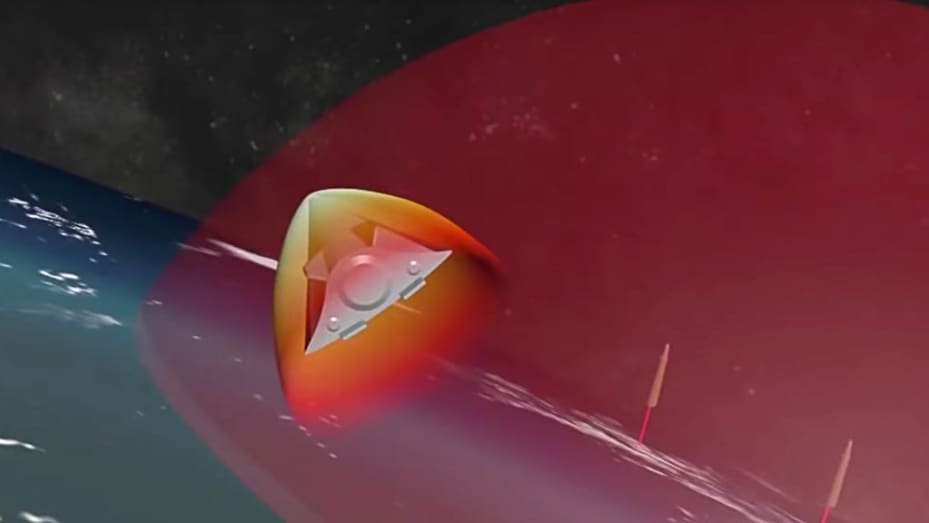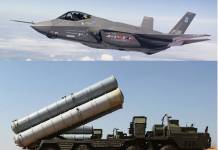On November 18, the Russian Defense Ministry released a video showing how its Avangard Hypersonic Missile, which it claims is “impossible to intercept,” is loaded into the launch shaft.
The Avangard is a hypersonic glide vehicle that entered service in December 2019. It can be fired by various ICBMs, including the country’s newest and most advanced intercontinental ballistic missile, the RS-28 Sarmat.
In 2018, Russian President Vladimir Putin stated that the weapon can travel toward targets “like a meteorite, a fireball.”
O M.D. da Rússia informou que outro regimento de tropas de mísseis estratégicos na região de Orenburg está sendo equipado com o novo complexo Avangard.#Rússia #Avangard pic.twitter.com/HXZJh7rGoi
— Hugo Borges (@HugoBor73884636) November 18, 2022
According to the Russian military, placing a rocket into the launcher is a skill. A loader removes the missile from the vehicle, guiding it into a vertical position before slowly descending it into the launch shaft.
The missile was loaded into the launcher with the assistance of more than 40 people. Takhir Magiyarov, deputy commander of the weapons formation, said, “Downloading is a complex, time-consuming process. More than 40 people participate in this process.”
“This takes more than one hour, and based on the results of this work, our rocket will take on combat duty. The new complex is a product of high technology, modern technology; it differs significantly from the previous complex,” he added.
In the video, the presenter of the state broadcaster also displayed what appears to be a control and command center for the missile system.
The Russian Ministry of Defense said that the Strategic Missile Force of Russia has started to re-arm another regiment of the Yasnensky missile formation with the Avangard system.

“In the Orenburg region, work is underway to re-arm the Yasnensky formation of the Strategic Missile Force with the Avangard silo-based missile system,” MoD noted.
The Ministry explained that adopting measures to re-arm the Strategic Missile Force, scheduled for 2022, will improve the combat capabilities of the strategic nuclear forces’ ground component in dealing with strategic deterrence missions.
The necessary infrastructure is needed to deploy another missile regiment for active duty. Along with the actual combat launch complex, it also has areas for the preparation of duty shifts, combat duty execution, and rest and recreation.
The Avangard warhead can perform direction and altitude maneuvers, evading any anti-missile systems and flying through the dense layers of the atmosphere at hypersonic speeds of up to Mach 27 (about 32,000 kilometers per hour).
Avangard Hypersonic Missile
The Avangard HGV is developed as part of the top-secret Project 4202 and given the codename Yu-71. In March 2018, Russian President Vladimir Putin first disclosed the missile during his annual State of the Union address.
At the time, Putin said, “I can tell you that we have all this already, and it works well. Moreover, Russia’s industry has begun to batch-produce this system. It is yet another type of strategic weapon at Russia’s disposal. We’ve called it Avangard.”
This HGV originated in the 1980s when the Soviet Union began developing warheads capable of traveling at speeds well above the speed of sound. However, the project was put to rest around the time of the Soviet Union’s disintegration in 1991.
NPO Mashinostroyeniya, a Russian defense contractor, purportedly revived the development in the mid-1990s under the codename “Project 4202.” The Avangard underwent roughly 14 flight-reported tests between 1990 and 2018.
At the end of December 2018, the weapon was fired from the Dombarovsky missile site in Orenburg, Russia. The HGV, which had traveled more than 6,000 kilometers, was launched from an SS-19 ICBM toward a target at the Kura shooting range in Kamchatka.

Russia has constantly stated that it is working on hypersonic weapons to ensure that its strategic forces can surpass any future American air and missile defenses.
The Avangard glides through the atmosphere, relying on reentry to accelerate to its peak speed. It is reportedly capable of making dynamic flying maneuvers to evade detection.
The Avangard is 5.4 meters long and weighs roughly two tons. The nuclear warhead of the HGV has a “TNT equivalent of more than two megatons,” according to TASS sources.
The Avangard HGV can be installed on the RS-28 Sarmat, Russia’s most powerful intercontinental ballistic missile (ICBM) (NATO designation: SS-X-29 Satan 2). The RS-28 Sarmat can carry approximately 10 tons of payload, equating to about five Avangard HGVs.
- Contact the author at ashishmichel(at)gmail.com
- Follow EurAsian Times on Google News




